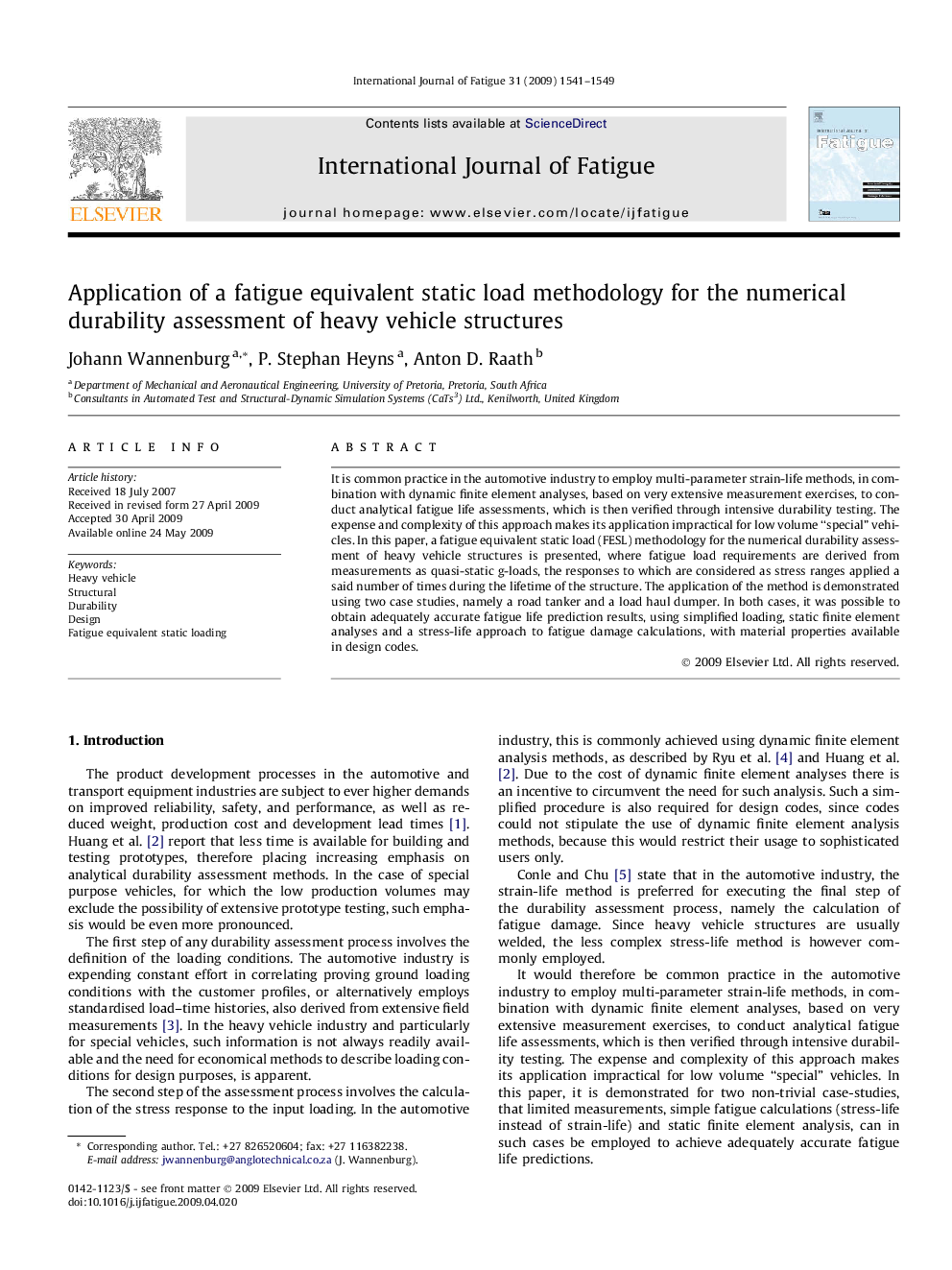| Article ID | Journal | Published Year | Pages | File Type |
|---|---|---|---|---|
| 781508 | International Journal of Fatigue | 2009 | 9 Pages |
It is common practice in the automotive industry to employ multi-parameter strain-life methods, in combination with dynamic finite element analyses, based on very extensive measurement exercises, to conduct analytical fatigue life assessments, which is then verified through intensive durability testing. The expense and complexity of this approach makes its application impractical for low volume “special” vehicles. In this paper, a fatigue equivalent static load (FESL) methodology for the numerical durability assessment of heavy vehicle structures is presented, where fatigue load requirements are derived from measurements as quasi-static g-loads, the responses to which are considered as stress ranges applied a said number of times during the lifetime of the structure. The application of the method is demonstrated using two case studies, namely a road tanker and a load haul dumper. In both cases, it was possible to obtain adequately accurate fatigue life prediction results, using simplified loading, static finite element analyses and a stress-life approach to fatigue damage calculations, with material properties available in design codes.
